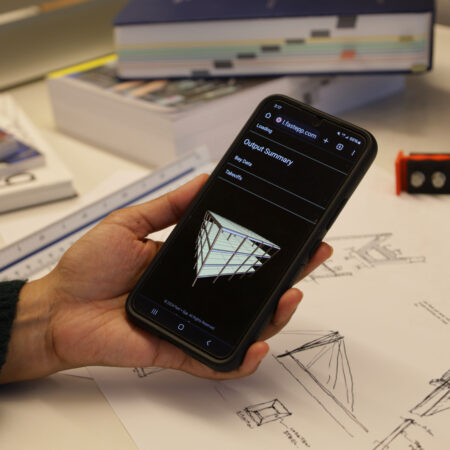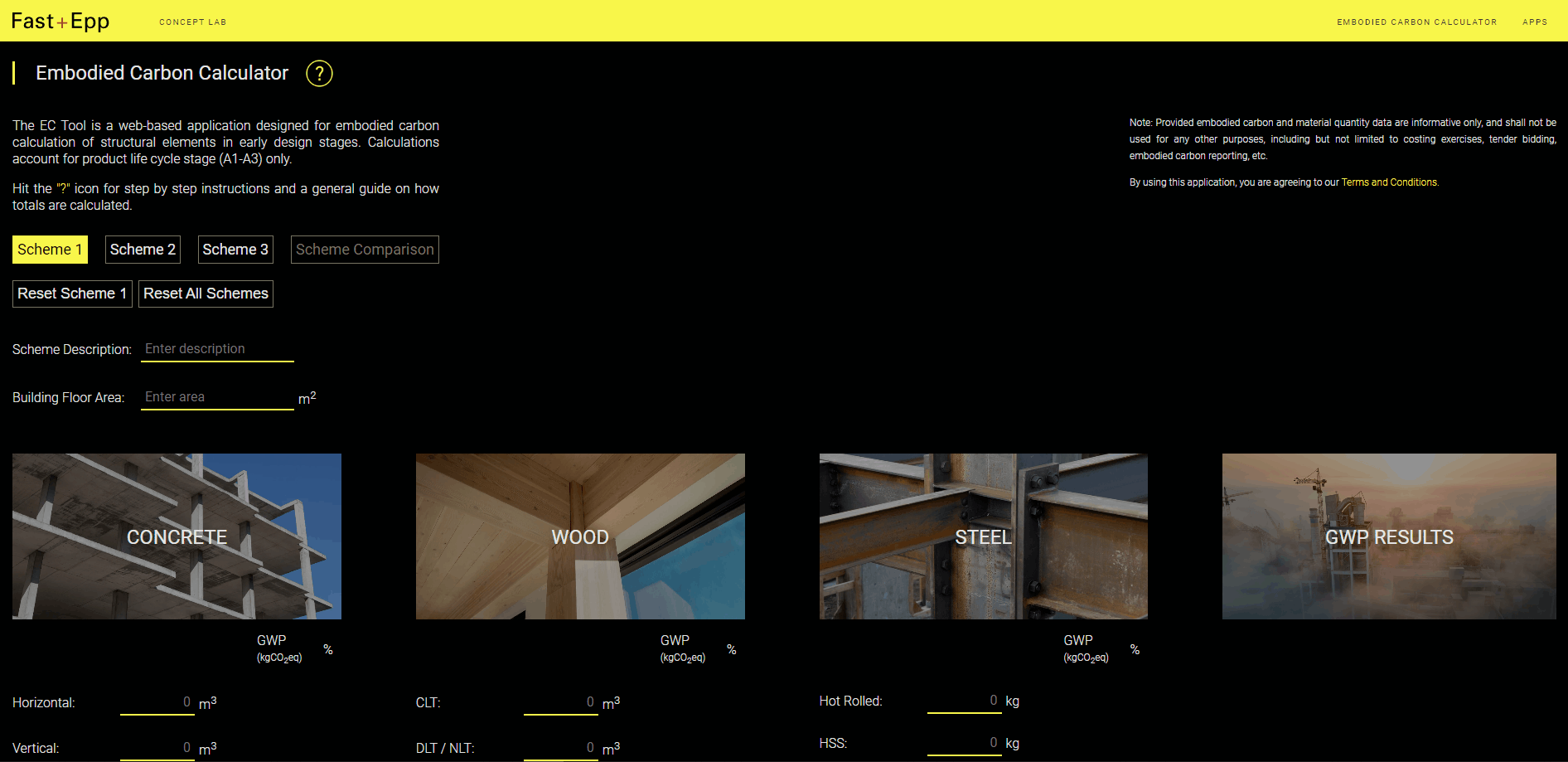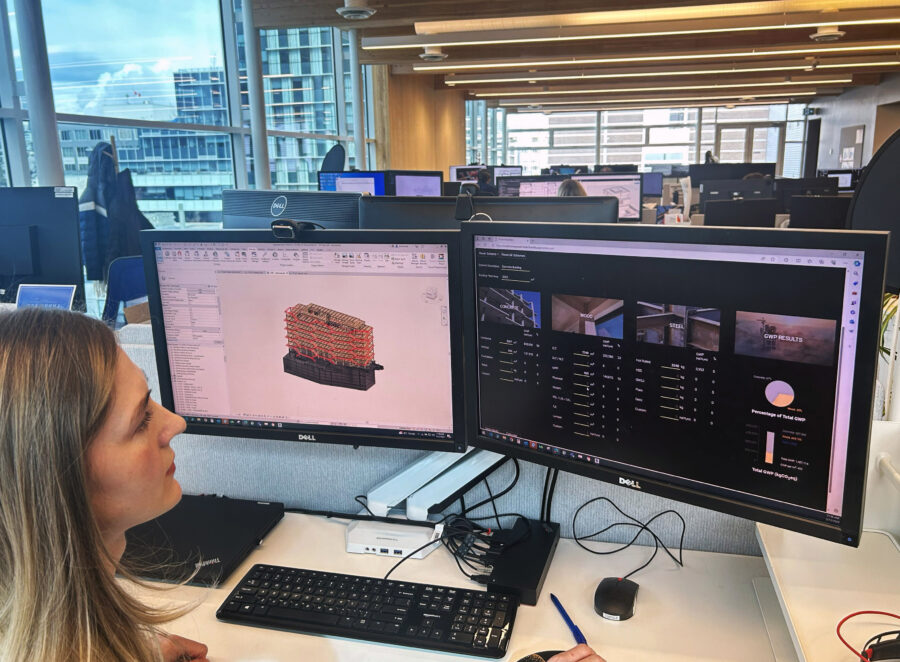
Fast + Epp launches two new web-based apps
May 10, 2024
Fast + Epp launches two new web-based apps
Our Computational Design and Sustainability teams have created not one, but two new tools within our Concept Lab suite of web-based applications. This collaborative effort underscores our dedication to advancing structural design and helping reduce embodied carbon in construction.
Bay Design Tool
In light of the major building code updates in BC & Ontario permitting mass timber construction up to 18 storeys we are proud to unveil the next generation of our Bay Design Tool. Building upon the foundation of its predecessor, this updated version incorporates a host of new features to help streamline the design process.
This web app now offers concrete and steel design options alongside the existing timber framework. This addition allows users to compare and contrast different material choices for multi-bay, multi-storey designs facilitating informed decision-making based on structural performance, cost-effectiveness, and sustainability considerations. With the ability to conduct side-by-side comparisons in both metric and imperial units in real time, professionals can evaluate design iterations more efficiently.
Underpinning these enhancements is a transition to a Python back-end and three.js rendering engine, resulting in improved speed and functionality, and a seamless user experience.
Embodied Carbon Tool
In an effort to learn, implement and share the best design practices to reduce carbon emissions associated with buildings, we are pleased to also announce the launch of our Embodied Carbon Calculator. This is a free web-based tool designed to simplify embodied carbon calculations for structural elements during early design stages. Focused on life cycle stages A1 to A3, covering raw material supply, transportation, and manufacturing, it offers clarity on environmental impacts in construction.
Designed for architects, engineers, sustainability consultants and students, the tool requires a basic bill of quantities or a Revit material schedule for input. This streamlined approach ensures that users can seamlessly integrate sustainability considerations into their design process from its earliest conception. Users are able to compare up to three design schemes simultaneously and evaluate different materials and construction methods to identify the option with the lowest embodied carbon impact.
By demystifying the complexities of embodied carbon assessment, we hope to nurture a culture of informed decision-making and conscientious design practices.

